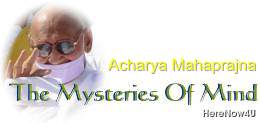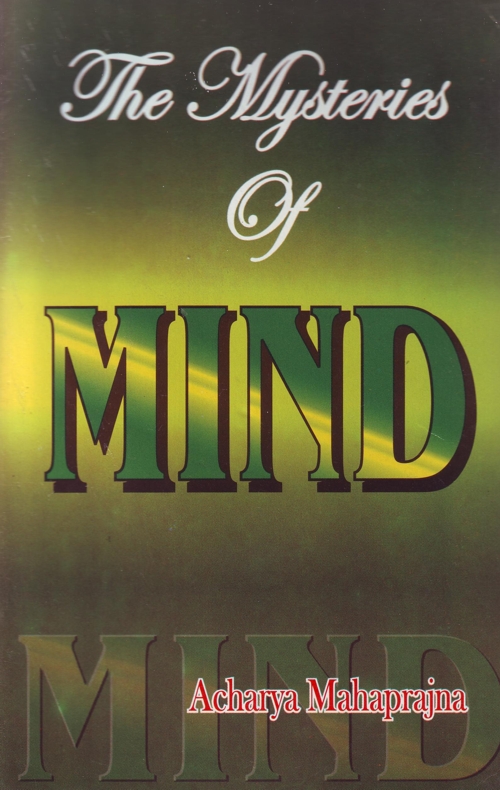
- One who has understood himsa (injury) to be terrible will not commit any sin.
- One whose mind is in a state of equilibrium will not commit any sin.
- One who sees unity behaves in a uniform way.
- One who behaves in a uniform way understands unity.
- Let us begin the search for truth by searching ourselves and our life.
- Breathing keeps us alive, the mind and empirical consciousness keep us going and consciousness enlightens us.
- See with your closed or open or half-closed eyes - see the end-point of the nose, objects and vibrations.
- You will gain insight, the status of spectator, equality and neutrality.
- What to see?
- Those who are prone to anger will see anger.
- Those who see terror will see the maturing of anger.
- Those who are equanimous should see equality.
- Those who experience nothing but the self should perceive the pure soul.
- Those who see the supreme should continue to see the supreme.
- Those who have given up desires should perceive inaction.
- Those who see the body should go on perceiving the body.
Search For Truth
One who has decided to engage himself in preksa meditation (perceptive meditation) takes the vow of perceiving truth. The ultimate aim of meditation is the search for truth. One who does not meditate cannot pursue truth. We are surrounded by all kinds of truth and some of them are so subtle that it is not possible to see them with the bare eyes. These subtle truths cannot be comprehended even by the gross mind. They do not become the objects of empirical consciousness. It is only with insight, the subtle mind and subtle consciousness that we can perceive them. Nor can we make the vision subtle and seasoned except with the help of meditation. Consciousness lies buried under layers of attachments and aversions. It cannot be refined until these layers have been removed. That is why the practitioner engages himself in the search for truth. This search begins with selfperception. He does not search truth outside himself but within.
Let us begin with perceiving the breath. Breath is the first prerequisite of life. Breathing keeps us alive; therefore let us begin the search for truth with breathperception. We live because we have a body, and, therefore, the body is the second object of our perception. Life depends on the activities of the mind like thinking, search for alternatives and reflection. Therefore we will have to try to perceive thoughts, mind and reflection as the objects of preksa meditation.
Consciousness lies at the base of our existence. Everything is driven by it. It drives our body, mind and breath. The entire uni verse stands on the base of consciousness, and, therefore, let us make consciousness the object of perceptive meditation. The more we perceive, the more do we find to be worthy of being perceived. There are four main areas of perceptive meditation:
- Breath,
- Body,
- Mind (Citta), and the intellect and
- pure consciousness or the soul.
It is in all these areas that truth has to be perceived.
What is the importance of breath in the search for truth? It has a great importance. When we are breathing in, our breath draws into the body several substances. Those who have practised breathing for yogic purposes know that it draws in vital elements in several forms, which constantly present themselves to the perception of the practitioner. These forms can be perceived by open as well as closed eyes.
I have been wondering for a long time as to why great value has been attached to aumkara (the letters A, U and M combined together). Practitioners have taken this combination to be the symbol of God. Why? I read a number of works to understand the secret. We can understand the limitations of books. The information they provide is limited information. Anyhow, I came to understand that aum is a powerful fundamental charm. It has infinite magical properties. The sound we produce while pronouncing it has several consequences. I could very well understand this. But I failed to understand that which I wanted to understand. Ultimately my exercises in meditation revealed to me the secret. It became clear in my experiences. When the practitioner tries to master prana or the vital force, he finds that innumerable vital particles, which remain spread in the atmosphere around the human body, begin to take various shapes and forms. These particles are so numerous that it is impossible to count them. Moreover, they go on continuously changing. The last form they assume is the replica of aum presented to the eyes of the practitioner. I did not read this in any book, but it came as an experience.
Aum is a specific form of the vital energy. When vital energy begins to gather force and enters into the body, it assumes the form of aum which is a specific form it takes. That is why so much importance has been attached to it.
The entire course of our life including our tendencies is governed by vital energy. Without it the human being will either be an emancipated soul or dead as a stone. Emancipated souls do not vibrate. They perceive vibrations of consciousness only. A dead stone produces neither vital vibrations nor the vibrations of consciousness.
 Acharya Mahaprajna
Acharya Mahaprajna

